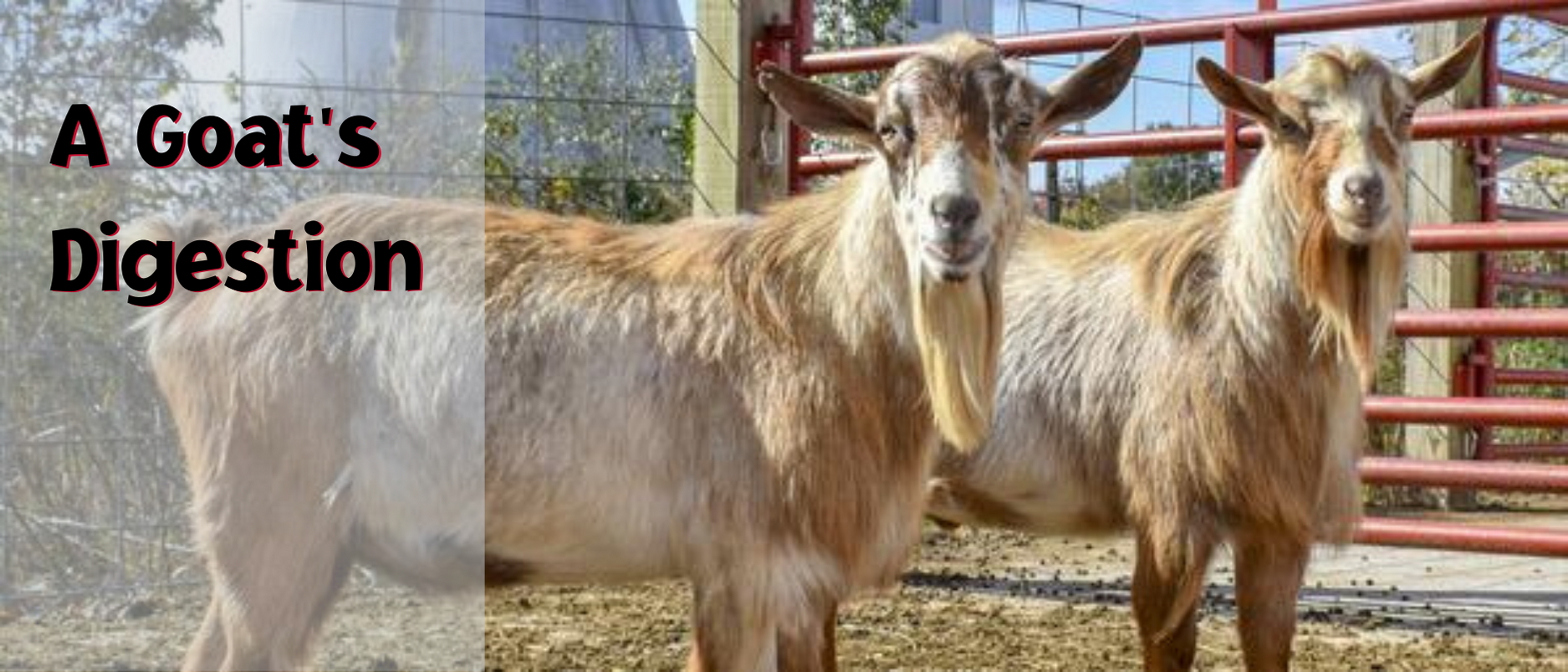Your Cart is Empty

September 01, 2019
 The sun radiates massive amounts of energy to the earth continuously. We humans can only harness a little bit of that, and we do so inefficiently. Goats on the other hand supply nearly all of their energy needs by efficiently converting solar energy stored in grasses and other plant material. How can they do this?
The sun radiates massive amounts of energy to the earth continuously. We humans can only harness a little bit of that, and we do so inefficiently. Goats on the other hand supply nearly all of their energy needs by efficiently converting solar energy stored in grasses and other plant material. How can they do this?
Goats can do this because they are ruminants and have four chambers in their stomachs. These four chambers allow goats to eat grass and plant material and derive nutrients and energy from them.
When a goat takes a bite of grass (by the way – goats don’t have any upper front teeth, they use their bottom teeth and tongue to bite), they chew it and swallow. This food then goes through the esophagus to the first chamber, the rumen.
The rumen is the largest of an adult goat’s four stomach chambers (about 70% and can hold 3-6 gallons). It is filled with microorganisms such as bacteria and protozoa that are responsible for breaking down the roughage (plant material) that has been ingested. A goat will periodically cough up a cud (plant material from the rumen) and chew on it before swallowing it again. This process is called ruminating and is vital for goat digestion.
The cud is filled with organisms that are needed in a healthy rumen. The microorganisms in the rumen will give off gas as they work to digest the plant material. Goats need to expel this gas by burping. The rumen is often very noisy during the digestion process and will make lots of sounds. Not only do goats absorb many nutrients through their rumens, but all that rumen activity helps to keep them warm. Once the cud has been broken down enough it passes to the next chamber, the reticulum.
The reticulum is the second chamber and aids the rumen in the fermentation process of food break down. If non-food substances are swallowed, they settle in this part of the stomach so they don’t enter the digestive system. From here the food moves onto the omasum.
This chamber has many folds that helps to remove the water from the food particles and further grind them up. Volatile fatty acids are absorbed in this chamber. This gives the goat needed energy. Finally the food enters the last chamber.
The abomasum is often referred to as the true stomach as it is similar to a human’s stomach. The abomasum contains hydrochloric acid and enzymes that digest what remains of the grass the goat had eaten. This is the last step before what is left enters the intestines. The abomasum is the stomach chamber from which rennet for cheesemaking is traditionally made.
The process of digesting is what enables goats (and other ruminants) to turn the solar energy stored in grass into raw goat milk that we can use. It’s an amazing process and should not be taken for granted.
Have you ever before considered why ruminants can eat grass and humans can't?

Disclaimer: This information is provided as an example of how we personally raise goats at Goat Milk Stuff. We are not veterinarians and any information on the GMS website should not be taken as veterinary advice. Please seek the advice of a professional vet before making any changes to your herd management or individual treatment of your goat.
Nice teaching.you just saved a live by it.
Comments will be approved before showing up.
Emily
February 08, 2022
Thanks heaps you just saved me a lot of research. Although I was also looking for the answer to ‘do goats have delicate digestive systems’